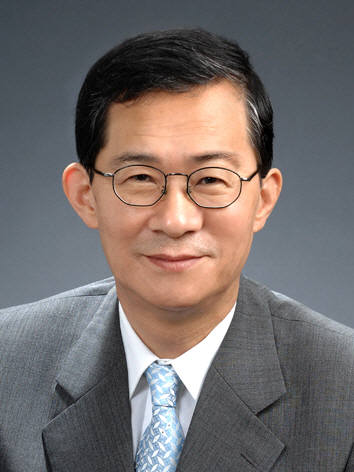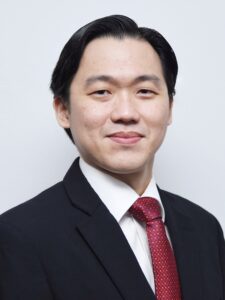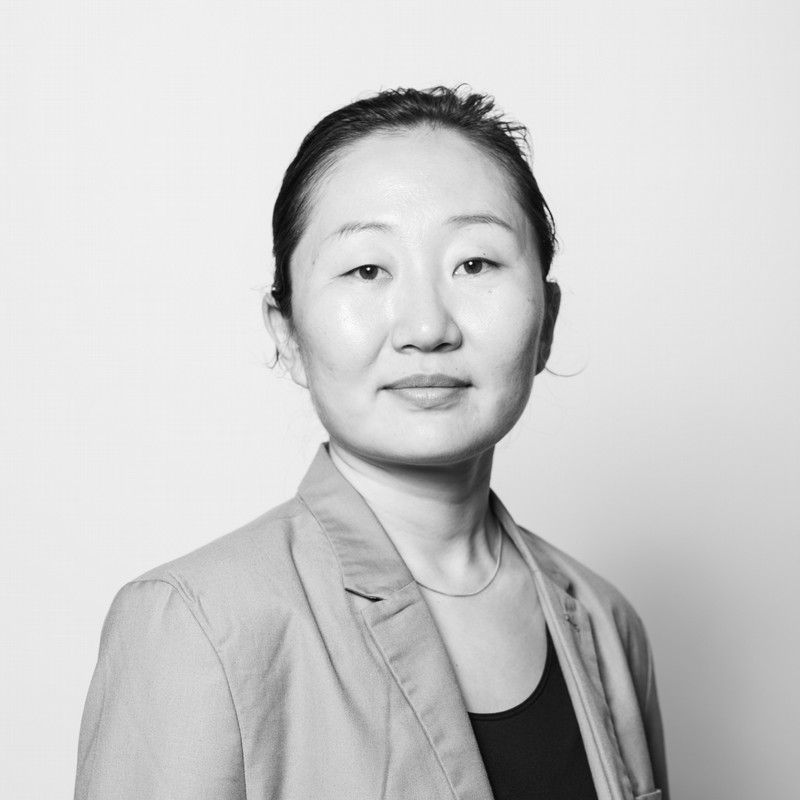
Keynote Speakers

Prof. Chumin Wang, National Autonomous University of Mexico, Mexico.
Biography:
Wang's academic journey began at the National Autonomous University of Mexico (UNAM). From 1980 to 1984, he completed his B.S. in Physics at UNAM, followed by an M.S. in Physics from 1985 to 1986, also at UNAM. He then obtained his Ph.D. in Physics from UNAM from 1987 to 1989. In 1993 - 1994, he was a postdoc at the Department of Physics, University of California at Berkeley, USA. Currently, he serves as a Tenured Full Professor and Researcher at UNAM. His research interests span a wide range of areas, including solid state physics, nanoscale materials, porous semiconductors, organic solar cells, graphene transistors, and superconductivity. Wang is a highly respected member of several prestigious scientific communities. He is a member of the Mexican National System of Researchers at Level III (the highest level), the Mexican Academy of Science, the American Physical Society, and the Materials Research Society. Throughout his career, he has made significant contributions as evidenced by his extensive publication record. He has authored and co - authored over 160 research papers in renowned international journals and conference proceedings. His research not only enriches the theoretical understanding of these fields but also has potential applications in materials science and semiconductor technology.

Prof. YoungPak Lee, Fudan University, China.
Biography:
YoungPak Lee received his B. S. degree from Seoul National Univ., Korea, in 1975, and the Ph. D. degree in experimental condensed-matter physics in 1987 from Iowa State Univ., U. S. A.
His research has involved study on magneto-optical, magnetic, optical and transport properties, and electronic structures of thin films and nanostructures, characterization of the surfaces and interfaces of thin films including multilayers, and so forth since his Ph. D. degree.
After many careers in U. S. A., Japan, Germany, China and Korea, he is now former President of the Korean Physical Society and Distinguished Prof., Physics Dept. of Hanyang Univ., and Distinguished Prof., Dept. of Optical Science and Engineering of Fudan University, China. Prof. Lee is also Fellow (former Physics Chair) of Korea Academy of Science and Technology, Series Editor for “Topics in Applied Physics” of Springer Publishing Co., and Editorial Board Member of “Journal of Electromagnetic Waves and Application.”
He has published 738 SCI papers with an h-index of 65 as of May 2022. His current investigations include metamaterials and magnetic photonic crystals, multiferroic systems, and nanoscopic investigation of morphology and magnetic domain. He has received tens of academic awards including Sungbong Physics Award (the highest-level Award from the Korean Physical Society) and Korean National Order of Science and Technology Merit.

Prof. Shunli Wang, Inner Mongolia University of Technology, China
Biography:
Professor, Doctoral Supervisor, Executive Vice President of Smart Energy Storage Institute, Academic Dean of Electric Power College at Inner Mongolia University of Technology, Academician of Russian Academy of Natural Sciences, IET Fellow, Provincial Senior Overseas Talent, Tianfu Qingcheng Provincial Scientific and Technological Talent, Academic Leader of the National Electrical Safety and Quality Testing Center, Provincial Tianfu Talent, Academic and Technical Leader of China Science and Technology City, Top 2% Worldwide Scientist.
In terms of undertaking scientific research projects, Professor Wang Shunli has achieved remarkable results. He has undertaken 56 projects including the National Natural Science Foundation, the Central Military Commission, and key research and development projects of the provincial science and technology department. In terms of academic achievements, he has published 173 articles in top journals in SCI - 1 area, with a Research Interest Score of 11158, his papers have been cited 2917 times, and his h - index is 28. He also has 52 authorized international/domestic invention patents, software copyrights/standards and other intellectual property rights. In terms of book publishing, he has published 7 works in well - known domestic and foreign publishers such as Elsevier and IET. Among them, "New Energy Technology and Power Management" has a total print run of 6300 copies and has been reprinted 4 times. In terms of talent cultivation, he has guided students to carry out 29 scientific and technological innovation projects, with 6 excellent completions; the students he led have won 34 awards in scientific and technological competitions. He himself has also won 13 scientific and technological awards including the Gold Medal of the 48th Geneva Invention Exhibition. In terms of academic exchanges and industry influence, he has served as the chairman of international conferences 3 times, an editorial board member of international journals 4 times, and hosted 3 international new energy summit forums.

Prof. Yasemin Öztekin ÇİFTCİ, Gazi Üniversitesi, Turkey
Biography:
Prof. Dr. Yasemin Öztekin Çiftci was born in Ankara. She is married and has a daughter. She received her bachelor's, master's, and doctorate degrees from the Physics Department of the Faculty of Science at Gazi University. She became an Associate Professor in 2008 and a Professor in 2014. She has graduated many master's and doctorate students. From 2004 to 2005, she worked on spintronics as a visiting scientist with Prof. Dr. P. Vasilopolous at Concordia University in Canada. In 2015, she worked with Prof. Dr. Subhendra Mahanti at the Department of Physics and Astronomy at Michigan State University in the USA for three months to investigate the thermoelectric properties of semiconductor materials. She conducts international scientific collaboration studies and publications with experts in Italy, Sweden, America, Algeria, and Pakistan. She organized a congress called Hydrogen Energy and Exhibition with international participation on June 14-16, 2021. She has conducted studies on molecular dynamics. He is also an expert in theoretical modeling of 2D and 3D materials using density functional theory, such as structural, elastic, electronic, vibrational, optical, thermodynamic, thermoelectric, hydrogen storage, and hydrogen production via water and solar, gas sensor properties, and other two-dimensional material applications. He has around 160 articles published in different journals and over 2000 citations. His H-index is 25. He has made presentations and contributed as an invited speaker in many domestic and international congresses.

Prof. SERGEI ALEXANDROV, Beihang University, Beijing, China
Biography:
SERGEI ALEXANDROV, Major in Plasticity theory, Constitutive Equations, Fracture mechanics, Modeling of Metal Forming Processes, Structural Design. His Education: 1. April, 1994 Doctor of Science in Physics and Mathematics, The Supreme Certificate Committee of the Russian Federation, theory of plasticity 2. March, 1990 Candidate of Science (Ph. D.) in Physics and Mathematics, Kuibyshev State University (Kuibyshev), theory of plasticity of porous and powder materials 3. September 1981 to July 1987 M.Sc. in Mechanical Engineering, All Union Machine-Building Institute (Moscow), Modeling of metal forming processes. His Work experience: Ishlinsky Institute for Problems in Mechanics, Russian Academy of Sciences (Moscow, Russia), Research Professor, 1991 – present; RUDN University (Moscow, Russia), Professor (part time), 2020 - present; Beihang University (Beijing, China), Professor (part time), 2024 – present; Beihang University (Beijing, China), Research Professor under the sub-program of the “Recruitment Program for Global Experts” (the 1000 Talent Plan”) 2017 – 2023; Ton Duc Thang University (Ho Chi Minh City, Vietnam), Adjunct Professor, 2019 - 2022; Moscow Aviation Technological University (Moscow, Russia), Associate Professor, 1991 − 1993 (part time) Full Professor 1993 – 1994 (part time); Moscow Instrument - Building Institute (Moscow, Russia), Assistant Professor, 1987 – 1991.

Prof. Sivakumar Rajagopal, Vellore Institute of Technology, India
Biography:
Sivakumar received the BE in Electronics and Communication Engineering from Bharathiar University, and the ME and PhD degree in Information and Communication Engineering from the College of Engineering Guindy, Anna University, Chennai, India. His research interests include Bio Signal Processing, Medical Image Processing, wireless body sensor networks, and VLSI. He has published over 100 journal and 100 conference papers over the last several years. He has taught a wide variety of Electronics courses including Digital Image Processing, Multimedia Compression Techniques, VLSI Design, Medical Electronics, and Electronic Circuits. Dr Siva is a life member of the Indian Society of Technical Education, a senior member of IEEE. Dr Siva has been invited to deliver Keynote Speech and Chair at various International conferences.
Invited Speakers

Assoc. Prof., Kwan Yiew Lau, Universiti Teknologi Malaysia, Malaysia
Biography:
Kwan Yiew Lau is an Associate Professor at the Institute of High Voltage and High CurrentFaculty of Electrical Engineering, Universiti Teknologi Malaysia. He received his PhD degreein Electronics and Electrical Engineering from the University of Southampton, UK, in 2013after completing his MEng degree in Electrical Power Engineering and BEng degree inElectrical Engineering (First Class Honours) from Universiti Teknologi Malaysia in 2010 and2007, respectively. He is also a Competent Electrical Engineer certified by the EnergyCommission of Malaysia and holds professional engineering credentials from multipleinternational institutions. His research interests include high voltage engineering, dielectricmaterials, and renewable energy systems, where he has published over 100 scientific papers innumerous reputable journals, achieving a Scopus h-index of22. In 2024, he was ranked amongthe World's Top 2% Scientists by Stanford University.
Assistant Prof., Uelun-Ujin Purev, Belmont University, USA
Biography:
Dr. Uelun-Ujin Purev holds a Ph.D. in Architectural Engineering from Kyushu University, Japan. During her PhD studies, she was awarded the Sasagawa Grant from The Japan Science Society and the Encouragement Award from Kyushu University's Q-PIT Support Program for Young Researchers and Doctoral Students.
Before joining Belmont University, Dr. Purev worked as a Postdoctoral Scholar at the Laboratory of Integrated Comfort Engineering, ENAC, EPFL in Fribourg, Switzerland, where she received the Swiss Government Excellence Scholarship. She was also a Senior Lecturer at the Mongolian University of Science and Technology. Her research focuses on the resiliency of cold climate vernacular architecture and parametric design, contributing valuable insights into sustainable building practices.
Dr. Purev's publications reflect her commitment to advancing knowledge in architectural engineering and her dedication to addressing real-world challenges through innovative solutions. Her research has been published in the Journal of Building Engineering from Elsevier, the Evergreen Journal from Kyushu University, and the Journal of Technology and Design from the Architectural Institute of Japan.
Her professional journey also includes significant roles as an architect in construction firms, working on residential and commercial building projects. Additionally, she actively participated in professional competitions along with her students. Notably, she earned the 2nd Place award in the School Building Design Competition of the Mongolian University of Art and Culture with her final-year architecture students.
"I am very excited to join the O’More College of Architecture & Design at Belmont University because of its vibrant, welcoming community and their Mission and Vision. I am eager to become part of this energetic environment and contribute to it through my teaching and research. The opportunity to engage with students and to collaborate with dedicated faculty members excites me immensely."

Dr., Christian Paglia, Swiss Federal Institute of Technology, Switzerland
Biography:
Ph. D in Material Science at the Swiss Federal Institute of Technology, in collaboration with Sika AG in Zurich. Post-doctoral Researcher in the Corrosion of Aerospace Aluminum Alloys Friction Stir Welds at the Material Science Department, Ohio State University, Columbus, USA, in collaboration with the Wright Patterson Air Force Research Laboratories. Responsible of a branch office of the Helbling Consulting Engineering Group, Zurich. Director of the Institute of Materials and Constructions at the University of Applied
Sciences of Southern Switzerland. Book on circularity of cementitious materials. Publications on concrete, metals, corrosion and recycling of building materials. Editorial board member of materials and corrosion scientific journals. Member of the CENTC 51 WG 14 Hydraulic binders for road bases. Member of the Swiss standard committee SIA 215 on mineral binders. Member of the environmental strategy working group for the EU Pave European concrete paving association. RILEM technical committee chair for roller compacted concrete for pavement applications, committee member for the degradation of organic coatings, carbonation of concrete with supplementary cementitious materials, chloride bonding in concrete, concrete fire spalling and performance-based asphalt recycling. Member of the commission for the impartiality of the Swiss certification body for construction products S-CERT AG (CH) / S-CERT FL GmbH (FL).
The Keynot Speaker list above is continuously updated.